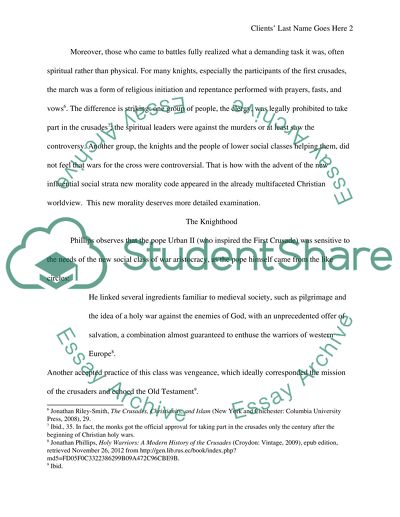Cite this document
(“The Crusaders and the Church Research Paper Example | Topics and Well Written Essays - 1500 words”, n.d.)
Retrieved from https://studentshare.org/religion-and-theology/1462003-the-crusaders-and-the-church
Retrieved from https://studentshare.org/religion-and-theology/1462003-the-crusaders-and-the-church
(The Crusaders and the Church Research Paper Example | Topics and Well Written Essays - 1500 Words)
https://studentshare.org/religion-and-theology/1462003-the-crusaders-and-the-church.
https://studentshare.org/religion-and-theology/1462003-the-crusaders-and-the-church.
“The Crusaders and the Church Research Paper Example | Topics and Well Written Essays - 1500 Words”, n.d. https://studentshare.org/religion-and-theology/1462003-the-crusaders-and-the-church.


